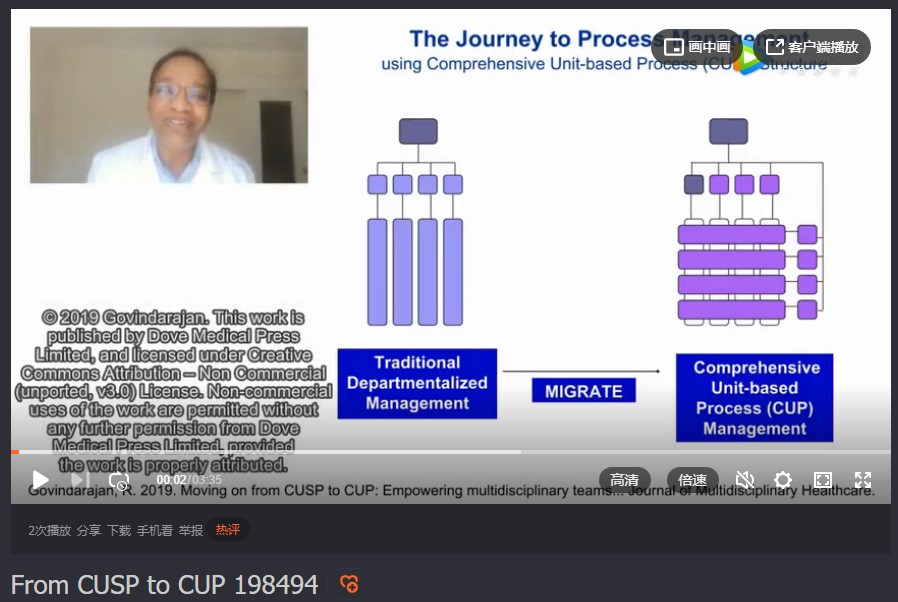9 0 6 7 6
论文已发表
注册即可获取德孚的最新动态
IF 收录期刊
- 2.6 Breast Cancer (Dove Med Press)
- 3.9 Clin Epidemiol
- 3.3 Cancer Manag Res
- 3.9 Infect Drug Resist
- 3.6 Clin Interv Aging
- 4.8 Drug Des Dev Ther
- 2.8 Int J Chronic Obstr
- 8.0 Int J Nanomed
- 2.3 Int J Women's Health
- 3.2 Neuropsych Dis Treat
- 4.0 OncoTargets Ther
- 2.2 Patient Prefer Adher
- 2.8 Ther Clin Risk Manag
- 2.7 J Pain Res
- 3.3 Diabet Metab Synd Ob
- 4.3 Psychol Res Behav Ma
- 3.4 Nat Sci Sleep
- 1.9 Pharmgenomics Pers Med
- 3.5 Risk Manag Healthc Policy
- 4.5 J Inflamm Res
- 2.3 Int J Gen Med
- 4.1 J Hepatocell Carcinoma
- 3.2 J Asthma Allergy
- 2.3 Clin Cosmet Investig Dermatol
- 3.3 J Multidiscip Healthc

Moving on from CUSP to CUP: empowering multidisciplinary teams and integrating them in the management structure of hospital organization
Authors Govindarajan R
Received 17 December 2018
Accepted for publication 20 February 2019
Published 15 April 2019 Volume 2019:12 Pages 257—268
DOI https://doi.org/10.2147/JMDH.S198494
Checked for plagiarism Yes
Review by Single-blind
Peer reviewers approved by Dr Colin Mak
Peer reviewer comments 2
Editor who approved publication: Dr Scott Fraser
Background: The functional role of Comprehensive
Unit-based Safety Program (CUSP) teams was extended to empower them and make
them a part of the organizational management.
Purpose: These
improvements in the functional roles of CUSP were made with the objective of
solving two structural issues, namely, departmentalization and compartmentalization
present in health care organizations.
Methods: The
following were three improved functional roles: 1) instead of just being a
reactive mechanism to implement improvements based on real safety issues, they
also carried out risk analysis and implemented preventive actions proactively;
2) instead of focusing only on safety, they controlled all results such as
safety, quality, treatment effectiveness and timeliness of their respective
process units, using a series of Key Performance Indicators; and 3) instead of
being a supplementary multidisciplinary team parallel to the organization´s
departmentalized management structure, they were made to participate in the
decision-making structure, representing their respective process units. These teams
represented different process units and were named as Comprehensive
Unit-based Process (CUP) teams.
Results: The
CUP structural design changed the dynamics of the organization: 1) it
integrated members of different disciplines, especially physicians and nurses,
and integrated them into a team with a shared goal, making internal
communication and teamwork a “systemic” requirement; 2) it disabled the
middle-level managers to represent the interests of specific knowledge-based
groups such as physician departments or nursing areas while making decisions;
and 3) it reassigned middle-level managers the task of representing different
CUPs, making each manager responsible for a process unit, thus ensuring control
over the results of multidisciplinary activities.
Conclusion: The
new organizational structure put burden on the system, not on its people, as it
made multidisciplinary communication and teamwork to be the rule of the game,
allowing patient-centered health care.
Keywords: process
management, CUSP, CUP, multidisciplinary teamwork, lean management, patient
safety
摘要视频链接:From CUSP to CUP
